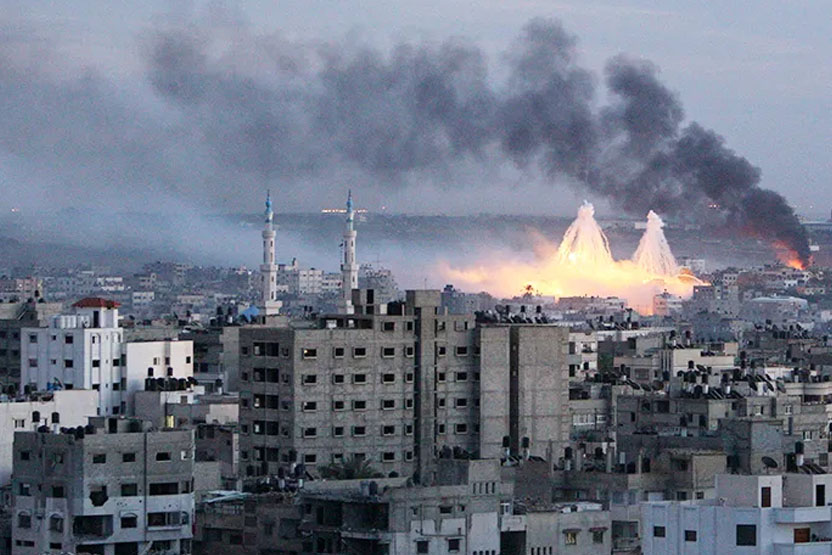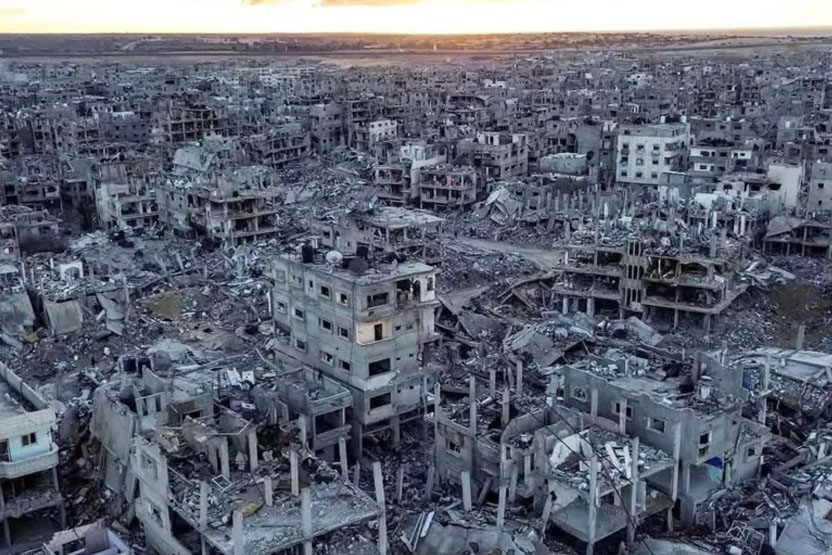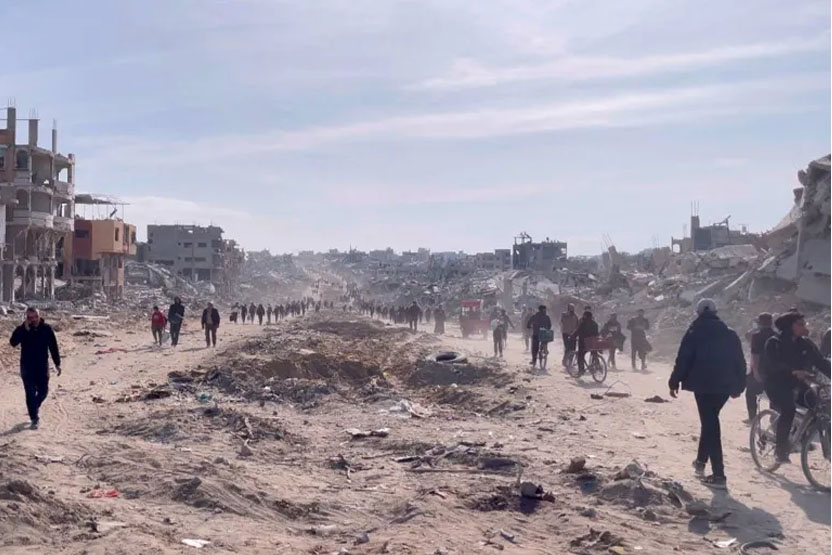
Israel has used a massive quantity of munitions in its offensive against Gaza, including some internationally banned weapons.
A new study reveals that the carbon footprint (volume of emissions) from the first 15 months of Israel’s war in Gaza exceeds the annual greenhouse gas emissions of a hundred countries, thereby worsening the global climate emergency, in addition to the staggering civilian losses.
The study, conducted by a group of researchers and published by the British newspaper The Guardian, estimated that more than 99% of the approximately 1.89 million tonnes of carbon dioxide equivalent generated between October 7, 2023, and the temporary ceasefire in January 2025 came from Israeli airstrikes and the ground invasion of the Gaza Strip.
Nearly 30% of the greenhouse gases emitted during this period are linked to the United States’ delivery of 50,000 tonnes of weapons and military equipment to Israel, most of which were transported by cargo planes or ships from stockpiles in Europe.
The remaining 20% are attributable to reconnaissance operations, Israeli airstrikes, the use of tanks and other military vehicles, as well as the carbon dioxide resulting from the manufacturing and detonation of bombs and shells.
The long-term climate cost of the destruction and reconstruction of Gaza could exceed 31 million tonnes of CO₂ equivalent — more than the total annual greenhouse gas emissions of Costa Rica and Estonia in 2023. Yet no country is required to report its military emissions to the UN as part of climate commitments.
The study also notes that the fuel used in Hamas tunnels and rockets is responsible for about 3,000 tonnes of CO₂ equivalent — barely 0.2% of the conflict’s total direct emissions. In comparison, 50% of these emissions come from the Israeli military’s supply and use of weapons, tanks, and other munitions.
According to the report, Israel’s relentless bombings, the imposed blockade, and refusal to comply with the International Court of Justice’s rulings highlight the imbalance in military power between the two parties, as well as the nearly unconditional military, energy, and diplomatic support Israel receives from its allies, particularly the United States and the United Kingdom.
Israel’s aggression against Gaza has led not only to a humanitarian catastrophe but also to an environmental one.
A Systematic Destruction
This is the third and most comprehensive analysis conducted by a team of British and American researchers on the climate cost of the 15-month conflict, during which more than 53,000 Palestinians lost their lives. It also caused immense infrastructure damage and an ecological disaster. The report also provides a partial but initial assessment of the carbon footprint of other recent regional conflicts involving Israel.
Overall, researchers estimate that the long-term climate cost of Israel’s military campaign in Gaza — along with recent military clashes with Yemen, Iran, and Lebanon — is equivalent to the emissions from manufacturing 2.6 billion smartphones or running 84 gas-fired power plants for a year.
This figure includes about 557,359 tonnes of CO₂ equivalent generated by the construction of Hamas tunnels under occupation and the "iron wall" erected by Israel.
Destruction and ecological damage in Gaza resumed after Israel unilaterally violated the ceasefire just two months later. However, the study's findings could eventually contribute to assessing claims for reparations.
Astrid Puentes, UN Special Rapporteur on human rights and the environment, stated:
"This updated study demonstrates the urgent need to end the escalating atrocities and to ensure that Israel and all states comply with international law, including the decisions of the International Criminal Court and the International Court of Justice."
She added:
"Whether or not states recognize the situation as a genocide, what we are witnessing profoundly affects all forms of life in Gaza, threatens human rights in the region, and even around the world, due to the worsening climate change."
The destruction has affected all main roads, as well as electrical and telecommunication networks. Northern Gaza has become uninhabitable, deprived of all conditions necessary for life. Residents who returned were only able to witness the destruction before leaving again, awaiting a hypothetical rehabilitation.
Through this war, Israel has deliberately sought to make Gaza unlivable by destroying all life-sustaining infrastructure.
An Ecocide
Before the war, solar energy provided up to a quarter of Gaza’s electricity needs — one of the highest proportions in the world. But most solar panels, along with the territory’s only power plant, were severely damaged or destroyed. Today, access to electricity relies almost entirely on diesel generators.
The destruction of this equipment by Israel led to the release of over 130,000 tonnes of greenhouse gases into the atmosphere — accounting for 7% of the conflict-related emissions.
Furthermore, more than 40% of the total emissions stem from the entry of around 70,000 humanitarian aid trucks into Gaza — allowed by Israel. However, the UN deemed this aid wholly insufficient to meet the basic needs of the roughly 2.2 million displaced and starving Palestinians.
But according to the report, the highest climate cost will come from the reconstruction of Gaza, most of whose buildings and infrastructure have been reduced by Israel to around 60 million tonnes of toxic rubble.
Transporting this debris by truck, followed by the reconstruction of 436,000 apartments, 700 schools, mosques, clinics, administrative offices, and other buildings, as well as 5 kilometers of roads, is expected to generate around 29.4 million tonnes of CO₂ — equivalent to Afghanistan’s annual emissions in 2023, for instance.
This reconstruction-related figure is slightly lower than previous estimates by the same research group, due to a downward revision of the average size of apartment blocks.
Zena Agha, a policy analyst with the Palestinian Policy Network (Al-Shabaka), stated that this report constitutes:
"A shocking and heartbreaking reminder of the environmental and biological cost of the genocidal campaign Israel is waging — both against the planet and against a besieged people."
Under current UN rules, reporting of military emissions is voluntary and limited to fuel use. Although the climate cost of Gaza’s destruction has global repercussions, the Israeli army has never reported its emissions figures to the United Nations.




Comment